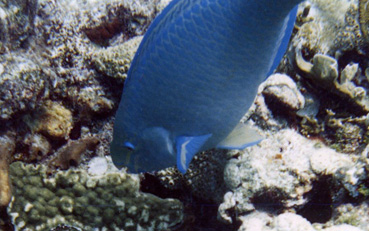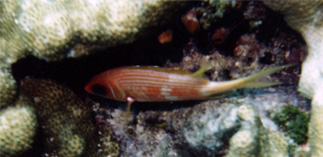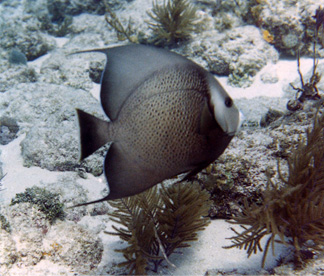Florida Visit
December 27-30, 1994
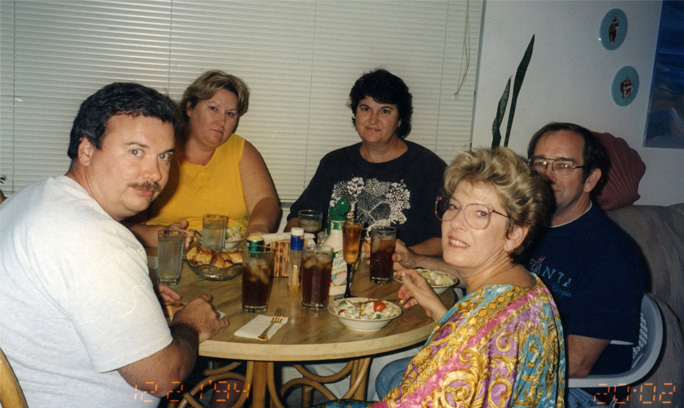 | Just after Christmas, Brenda, Rod and Mark made the trip down to the Ft. Myers area to visit Sherry, Wesley and Barbara, Denise and Roger. |
On December 28 we made the drive across Alligator Alley to Key Largo to do a scuba diving trip. This was to be our first wetsuit dive.
We got onboard and attached our regulators to air tanks for the dive. 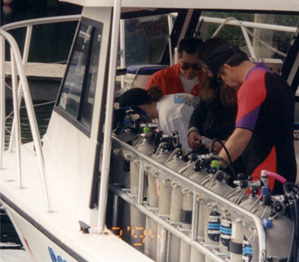 |  |
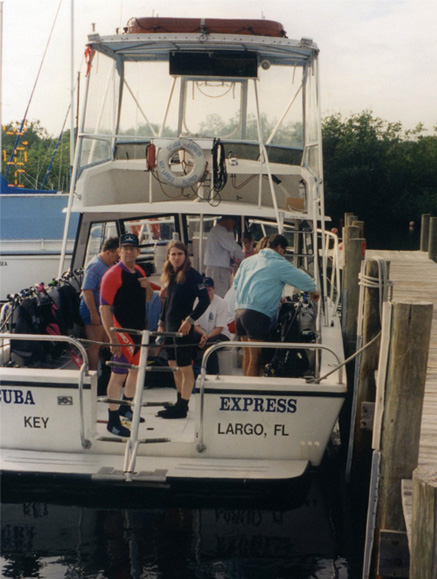 | We are onboard the Scuba Express in Pennekamp Park on Key Largo.  We had driven down from the Ft. Myers area and across Alligator Alley to get down to the Keys and Pennekamp Park. |
| Mark and Rod head down on Molasses Reef in Pennekamp Park for their first winter dive. It was really not all that cold with the wetsuits. |  |
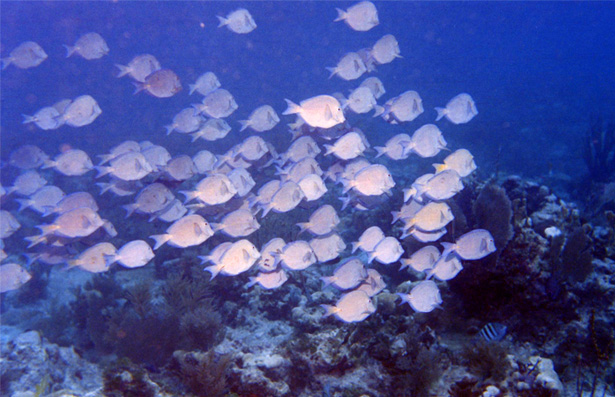 | One of our first sights was a large school of pale blue tang. The color doesn't show up well in the photo, but they were a beautiful pastel blue. The blue tang is one of my favorite fish. |
This large blue parrot fish was one of several large parrot fish we saw. The reef was full of old friends from previous dives in the Keys. | 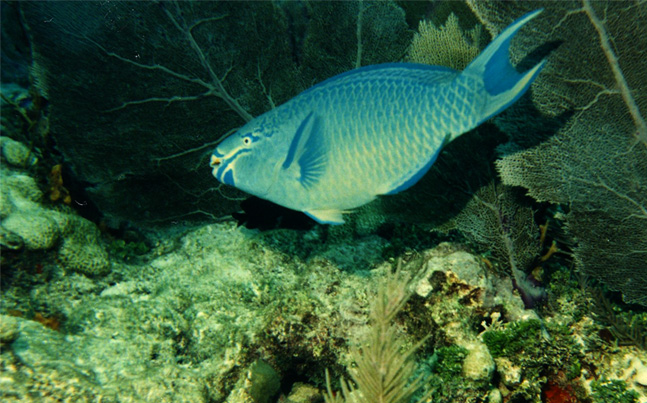 |
 | Mark heads toward a large school of grunts gathered under a ledge for their daytime dormant period. |
Mark cruises over Molasses Reef. There were lots of large sea fans. | 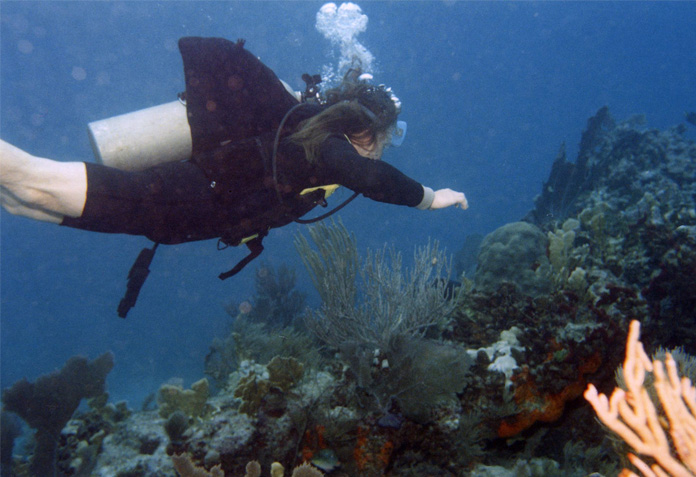 |
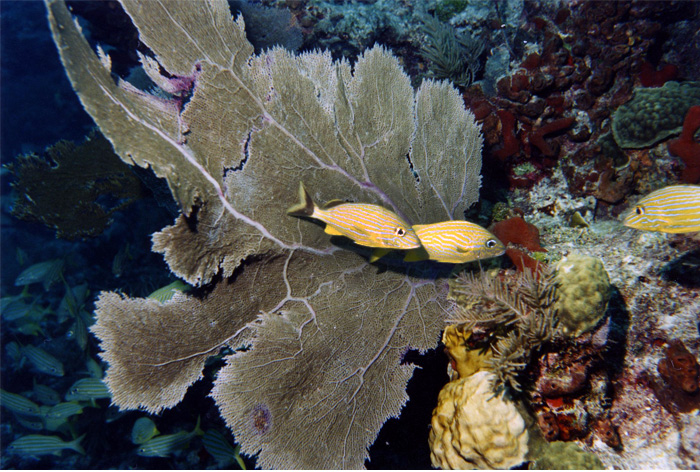 | These three grunts are hanging around by this large sea fan while the rest of their school may be seen below and left. |
 A trumpet fish takes its typical straight down posture beside a sea fan. Mark is cruising over an area of soft corals and sandy bottom. |  |
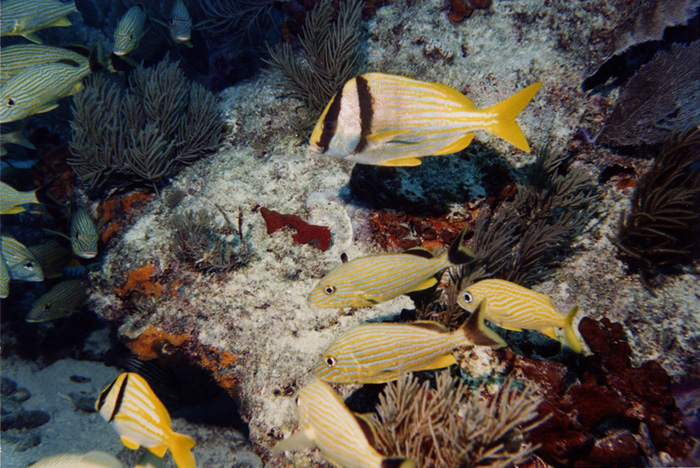 | A couple of nice porkfish hanging around with the grunts among the soft coral. |
The grunts tend to line themselves up heading in the same direction. | 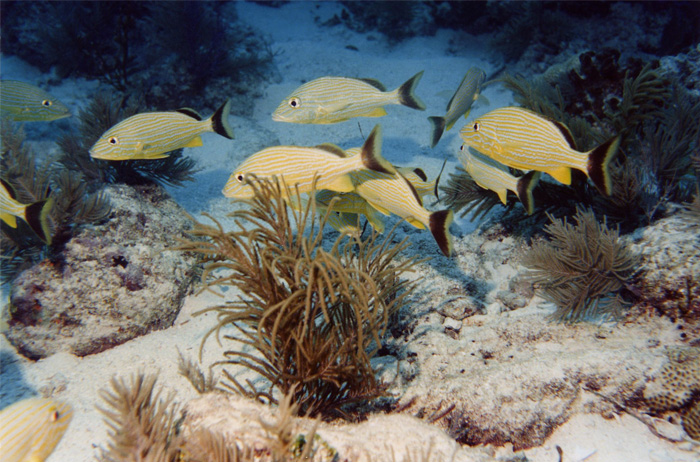 |
 | Examples of sea fans. | 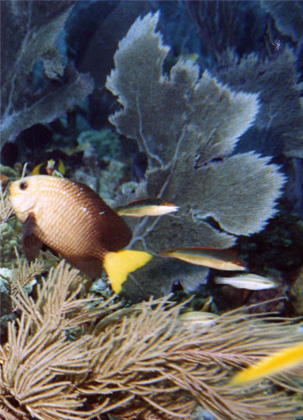 |
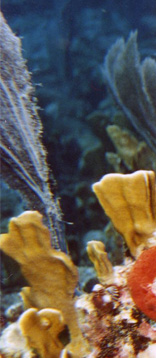 | The golden spade-like structures at left are fire coral, which will leave your skin stinging if you touch it. Note the two small tubeworm plumes between the fire coral growths. | 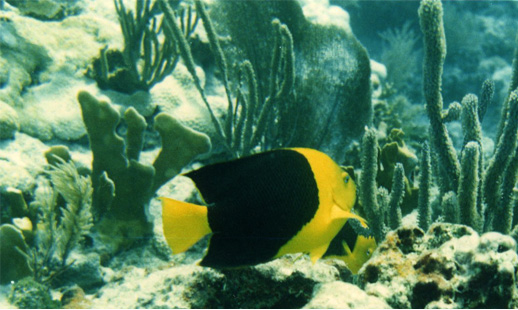 Dramatic in color but very shy, this rock beauty is hard to get close to. |
The blue parrot fish chomped away on the coral and ignored us. The barracuda just hung around and seemed curious. The darker blue parrot fish had his tail streamlined and was moving through.  It was nice to just cruise around and watch the variety of fish. It was nice to just cruise around and watch the variety of fish. | 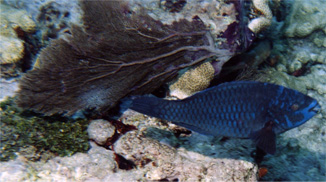 |
| Mark moving along through a soft coral region, a favorite area for the grunt below. | 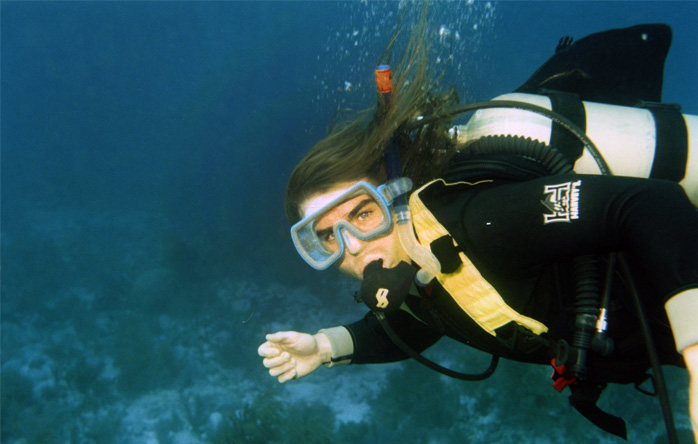 |
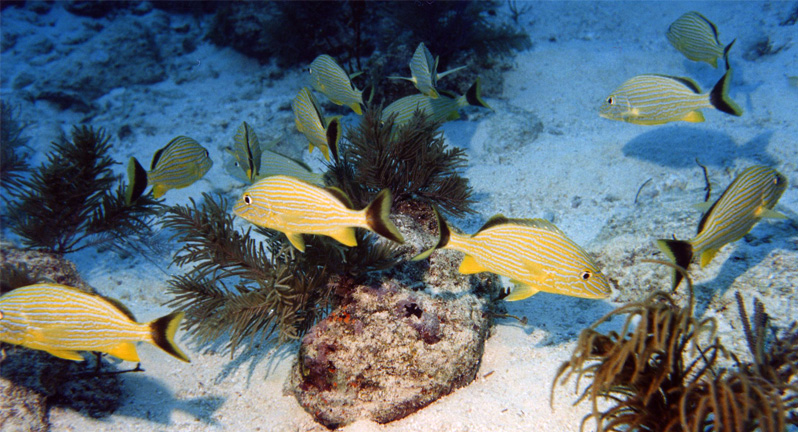
 | This large barracuda was quite curious and hung around with us for quite a while. He was about 30 inches long. |
It was interesting to just be in this guy's world for a little while. He just hung motionless beside us, and would move along when we moved. | 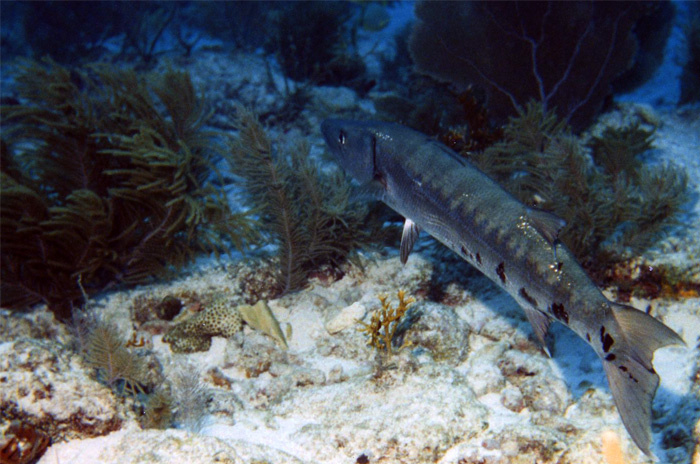 |

 | Scorpion Fish!This soft coral region seemed like a good place for a photo, so I motioned for Mark to move into to it. He found that there was a scorpion fish just below him and wondered if I were setting him up! The scorpion fish was almost white in places and well camouflaged against the white sand. We have seen them in red, and green, matching their backgrounds, so they are really chamelion-like in their ability to change colors. |
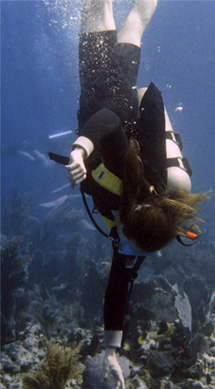 | We had brought along some beef jerky to feed the fish, but they weren't much interested. Mark tries to feed this sizable grouper. We had found that you can draw a crowd of fish with hotdogs, but jerky is just not the same. 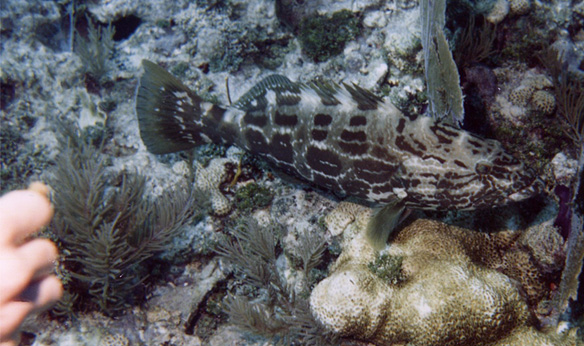 |
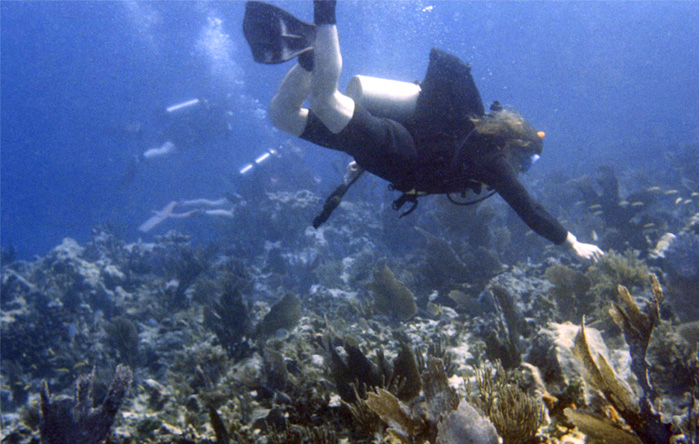 | We had a boatload of divers and were surprised to hear that this is one of their busiest weeks of the year at Pennekamp Park. Mark cruises above the reef with a couple of other divers from our boat in the background. |
We were careful to steer clear of large collections of fire coral like that in the foreground of this picture. It looks harmless enough, but you only need to have one experience with it to know otherwise. There is more fire coral in the background here, so this is a large collection of it. | 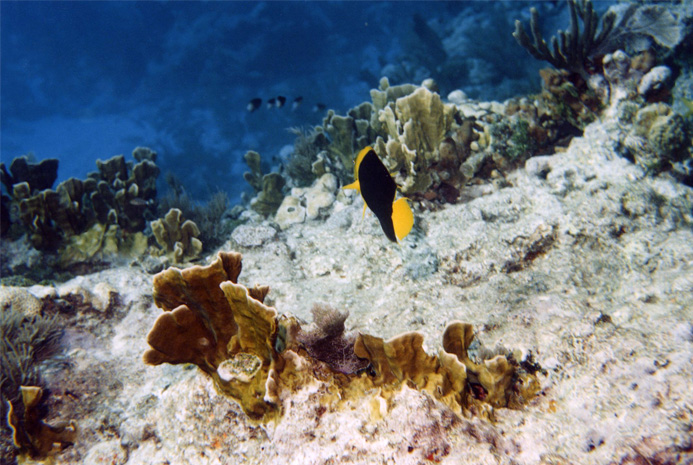 |
Mark moves through a great garden of sea fans. There were lots of striped sergeant majors and a couple of yellowtail snappers in the foreground.  |  |
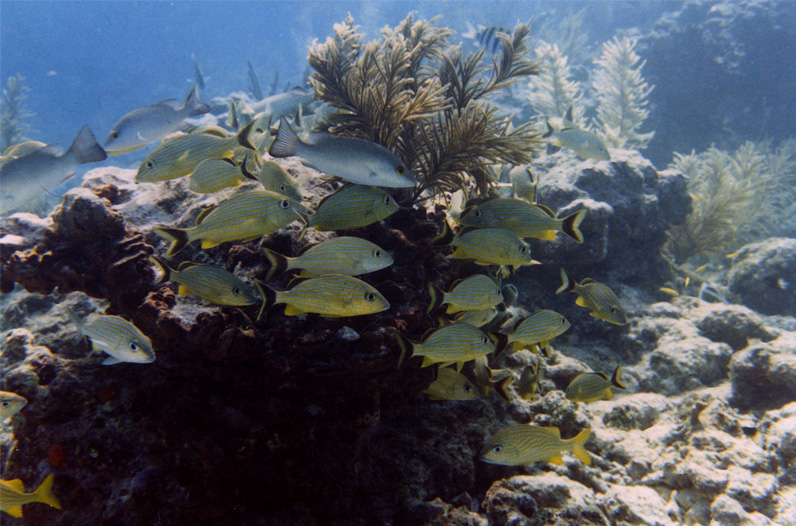
There was a feeling of tranquility about the schools of grunts gathered by the soft coral. I read that the schools of grunts pick out a given coral head or collection of soft coral and hang around it during the day, being mainly night feeders out on the grassy flats. It reminded me of herds of cows gathered under trees.
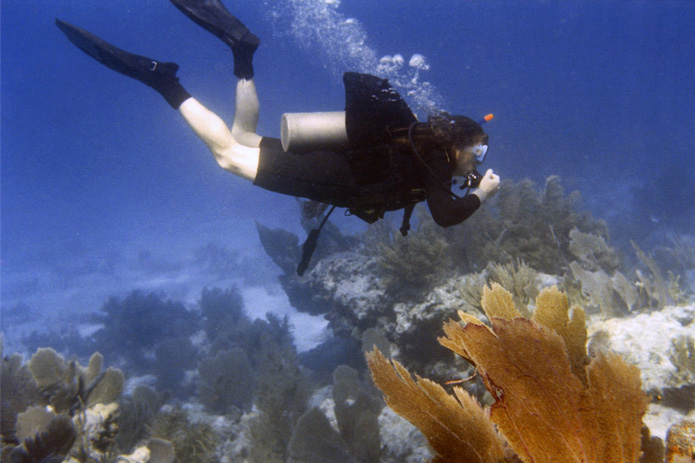 | Mark moving across the soft coral areas, exploring all the nooks and crannies for lobster and such. |
Stingray!We have seen lots of videos of these rays buried in the sand, and this one has sand on his snout, so we may have just waked him up. | 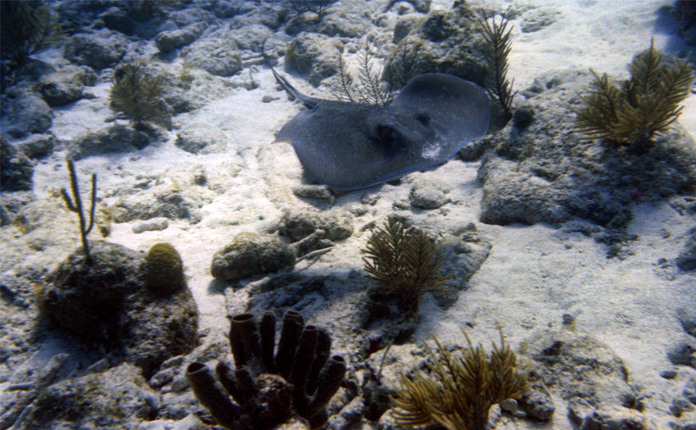 |
| 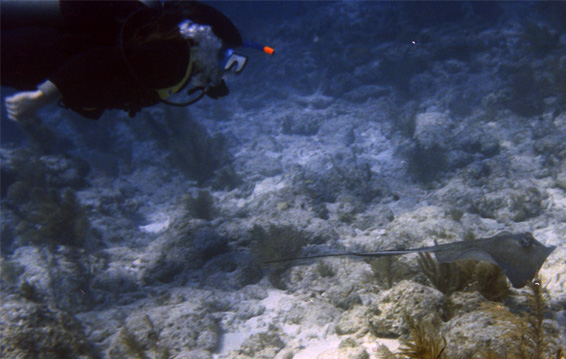 | Southern stingrays like this are supposedly extremely common, but we haven't seen them very often in our Keys dives. This one didn't seem particularly alarmed, but just moved leisurely away from us. 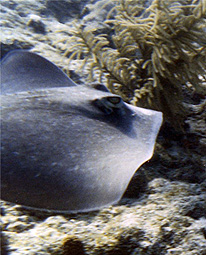 |
On this part of the dive we were in fairly shallow water, probably about 10 feet deep, so we had good light. As we moved around this reef, we got extreme temperature changes which surprised me. Some little hollows seemed extremely cold, and you could move out into the sun a nd find fairly warm water. Lots of fire coral in the shallow parts. | 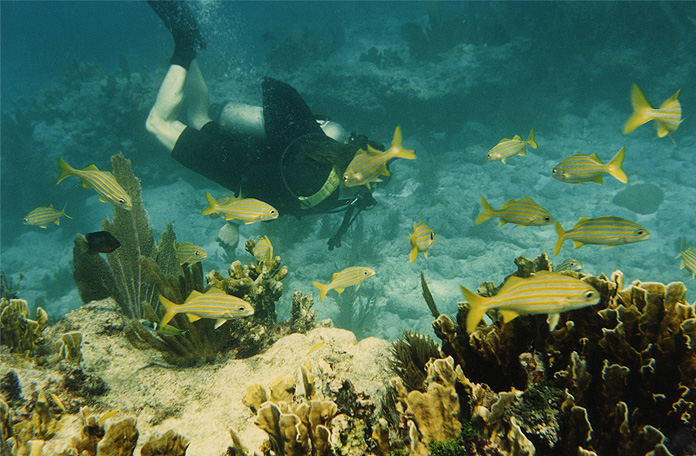 |
|  | Mark looked under all the ledges and into crevices and spotted all sorts of things. He was responsible for finding the half-dozen lobster we saw on the second dive. 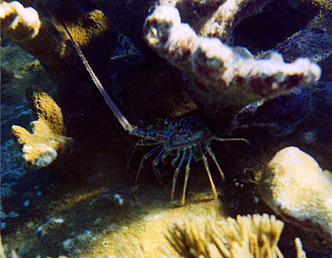 |
| 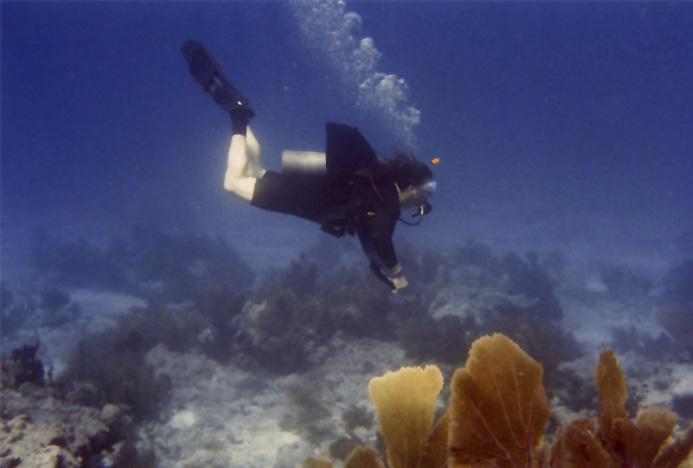 | I had some trepidation about a December scuba dive, visualizing shivering in the cold. But it was quite relaxed and comfortable, and nice to get back to the situation where you could just hang in the water, supported by your BC, and just watch things. |

| Back on the dock after a couple of nice dives with a lot of fish to look at. We enjoyed the dives and would like to do it more often. It was a good bit of trouble and time to get down here, but at the end of the dives, it seemed worth the effort. | 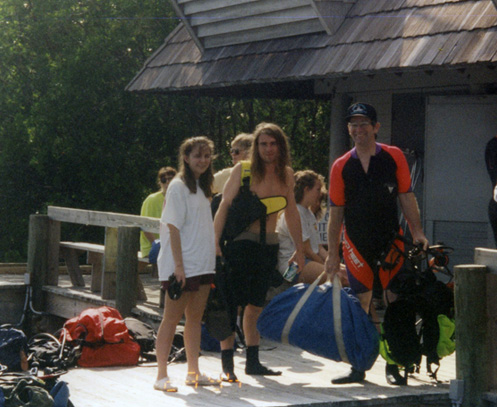 |
|
Index
1994 |



















